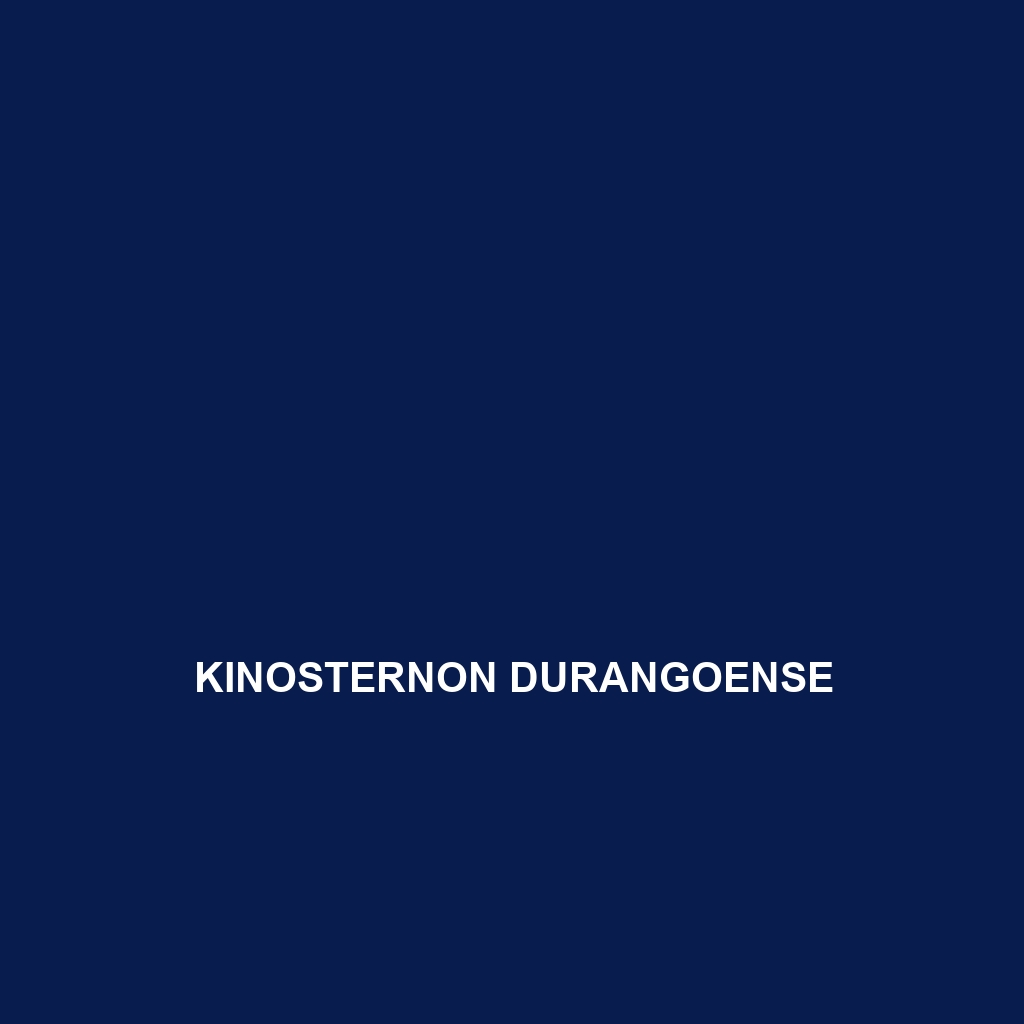Common Name
Kinosternon durangoense
Scientific Name
Kinosternon durangoense
Habitat
Kinosternon durangoense, commonly known as the Durango mud turtle, primarily inhabits the regions of northwestern Mexico, specifically in the state of Durango. This species favors freshwater ecosystems, typically thriving in slow-moving streams, rivers, and ponds. The environment around these water bodies is often characterized by semi-arid conditions, with the surrounding areas featuring a mix of sparse vegetation, grasslands, and some shrubbery. The climate in Durango tends to be dry with hot summers and mild winters, making it an ideal habitat for this unique turtle species. Given its specific geographical distribution, Kinosternon durangoense should be a focal point for those studying temperate ecology and freshwater fauna in desert landscapes.
Physical Characteristics
Kinosternon durangoense is known for its distinct physical traits, making it easily identifiable. An adult typically measures between 12 to 25 centimeters in carapace length, showcasing a low, streamlined shell that is dark brown to olive in color. The shell features a pattern of yellow and brown spots, providing camouflage in its natural habitat. This species possesses a unique pair of barbels on its chin, which aid in its foraging behavior by enhancing sensory perception in murky waters. Additionally, the limbs are robust, facilitating movement both in water and on land. The skin is covered with small, bumpy scales, providing additional protection and resilience in its arid environment.
Behavior
The behavior of Kinosternon durangoense exhibits various fascinating traits that attract researchers and enthusiasts alike. These turtles are primarily nocturnal, emerging during the night to hunt for food and engage in social interactions. During the day, they prefer to hide under rocks or within aquatic vegetation to avoid predators. Mating rituals occur during the warmer months, showcasing elaborate courtship displays, including gentle nudging and circling behaviors. The species is also known for its solitary nature outside of the breeding season, often leading to predominantly individual lifestyles.
Diet
Kinosternon durangoense is classified as an omnivore, consuming a diverse diet that includes aquatic plants, insects, and small fish. This versatility helps the turtle adapt to seasonal changes in food availability within its habitat. In calm waters, it can often be seen foraging by rummaging through the substrate and vegetation, using its sensitive barbels to locate food sources. Understanding its dietary preferences is crucial for ecological studies and the overall health of aquatic ecosystems, as this species contributes to the control of aquatic plant populations and the balance of food webs.
Reproduction
The reproductive cycle of Kinosternon durangoense is generally seasonal, with mating occurring in the spring months. After successful copulation, the female lays between 1 to 9 eggs, typically in sandy or soft soil near the water’s edge. The incubation period lasts around 60 to 90 days, depending on environmental conditions such as temperature and humidity. Hatchlings emerge in late summer and exhibit a high degree of independence immediately after birth. Parental care is minimal, as the young turtles must fend for themselves from the outset. This strategy highlights the risks and challenges of survival in their native habitats.
Conservation Status
Currently, Kinosternon durangoense is classified as “vulnerable” by the International Union for Conservation of Nature (IUCN). The primary threats to its population include habitat destruction due to urbanization, pollution, and climate change, which affect freshwater ecosystems. Conservation efforts are underway, focusing on habitat preservation and awareness campaigns to protect these unique turtles in their natural environment. Understanding the ecological significance of Kinosternon durangoense is vital in promoting strategies for its conservation and ensuring the continuation of this species.
Interesting Facts
One interesting fact about Kinosternon durangoense is its unique ability to tolerate lower oxygen levels in aquatic environments, a trait not commonly found in other turtle species. This adaptation allows it to thrive in the sometimes stagnant waters of its native habitat. Furthermore, studies suggest that these turtles are capable of producing distinct vocalizations, which may play a role in mating and social interactions.
Role in Ecosystem
Kinosternon durangoense plays a vital role in its ecosystem, functioning as both a predator and prey within freshwater habitats. As an omnivore, it helps control plant and insect populations, contributing to the overall health of its habitat. Additionally, by foraging for food at the bottom of water bodies, the Durango mud turtle helps to aerate sediments, enhancing the habitat’s ecological balance. Its interactions with other species, from aquatic plants to small fish and insects, underline its importance as a key species in maintaining biodiversity in the freshwater ecosystems of northwestern Mexico.
